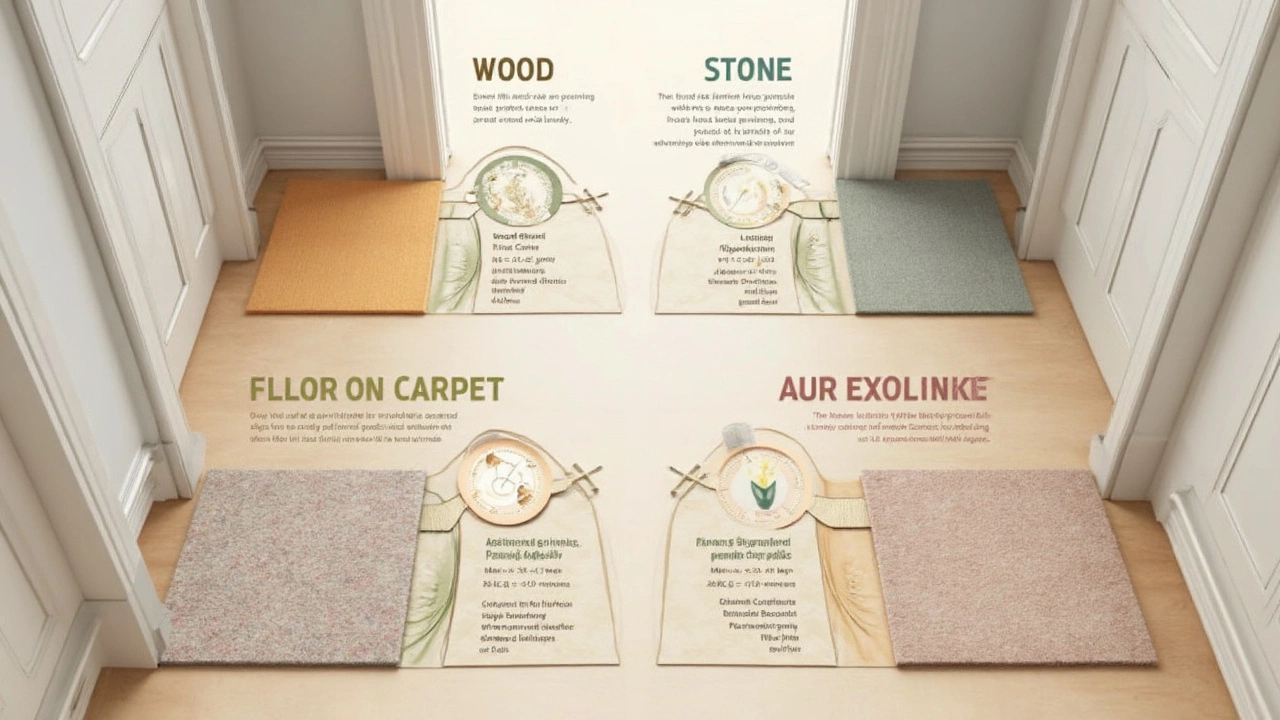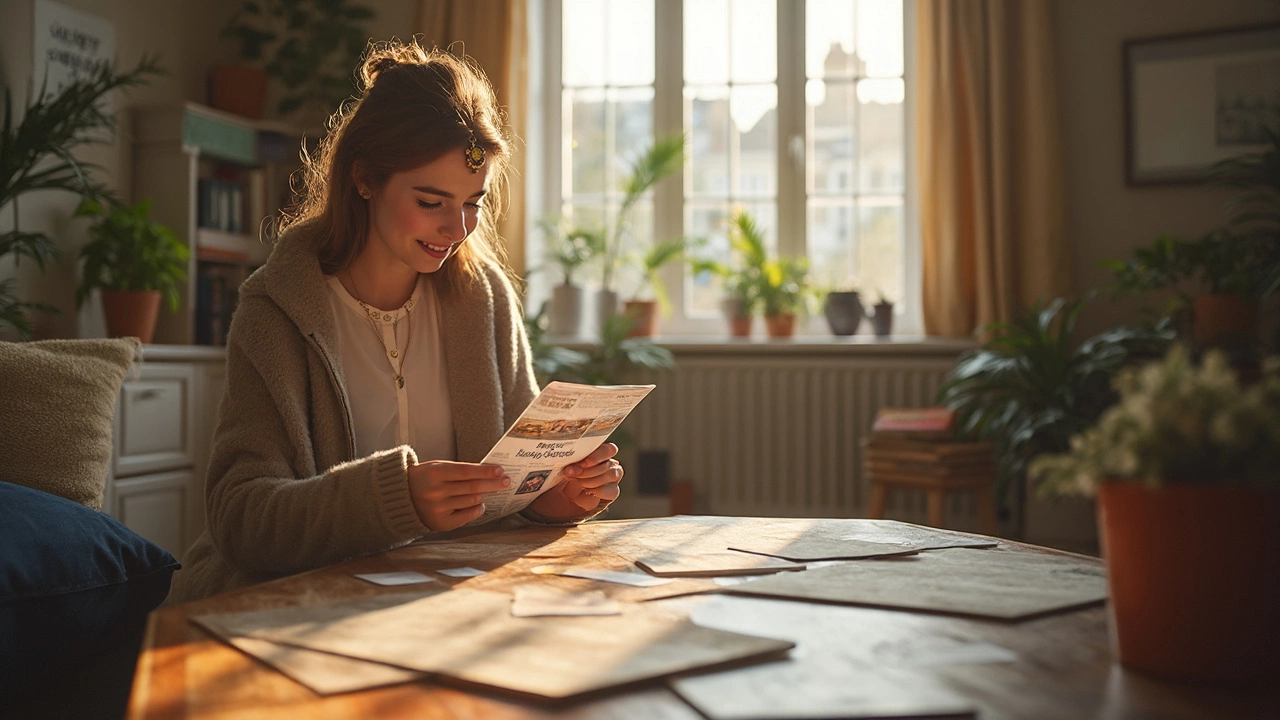It’s wild how much prices can jump when you start replacing an old, ugly floor. You want a place that feels like home but without torching your savings on fancy planks or exotic tile. You may think, “Does it even matter what’s beneath my feet, as long as it’s not a mess?” Here’s the catch: what’s cheap upfront might cost you later in headaches, while spending a little more might pay off. Let’s look at what your dollars really buy, and what choices give you the biggest bang without burning your wallet.
What Are the Cheapest Flooring Materials Right Now?
The market's changed a lot in the last few years—remember when carpet reigned supreme everywhere? That’s not the case anymore. Today, you’ve got more types of cheap flooring than grandma ever dreamed. But what’s truly the cheapest flooring? Here’s the shortlist everyone should know:
- Sheet Vinyl: Stays at the top for being dirt cheap, quick to install, and crazy easy to clean. You’ll find rolls at home improvement stores running $0.75 to $2 per square foot. It comes in a huge range of looks: tile, stone, or even wood that’ll fool your friends at a glance. The new stuff’s also softer underfoot than old “hospital” vinyl. But, it scratches easily and doesn’t love heavy furniture. Major water-wicking, though, so kitchens and basements love it.
- Peel-and-Stick Vinyl Tiles or Planks: The ultimate weekend warrior special. These run $1 to $3 a square foot, slap down with adhesive backing, and don’t need pro skills. You can cover a small bathroom floor in an afternoon. The main tradeoff: They may look real at a distance, but close up, they’re plastic. Groutable versions exist for a fancier look—but at higher cost.
- Laminate Flooring: This one blew up because it mimics wood so well, but for much less than real hardwood. Expected price: $1 to $3.50 per square foot. Not as waterproof as luxury vinyl, but it’s pretty tough on surface scuffs—kids and pets won’t destroy it instantly. You get more design options than the pure budget picks, but moisture is its enemy. Kitchens? Risky.
- Builder-Grade Carpet: Still the fallback for bedrooms and basements that stay dry. Lowest price: $1 to $2.50 a square foot, and that usually includes the underlay if you find a deal. Super warm in colder climates, but carpet can stain, grab pet hair, and trap allergens. Needs steady vacuuming. If you’re flipping or renting a house where style isn’t top dog, this can be a fast fix.
- Painted Plywood or Concrete: When pennies are squeezed so tight they beg for mercy, you can turn a subfloor or old slab into a "statement piece". Expect $0.50 to $1 per square foot—for primer and paint. You sacrifice comfort, but you can layer area rugs or mats for softness.
Here’s a quick look at average costs for the most common cheap flooring materials, compared side by side. These prices are pulled from major supply chains as of June 2025:
| Material | Approximate Cost/Sq Ft | DIY Friendly | Waterproof |
|---|---|---|---|
| Sheet Vinyl | $0.75 - $2.00 | Yes | Yes |
| Peel-and-Stick Vinyl | $1.00 - $3.00 | Yes | Mostly |
| Laminate | $1.00 - $3.50 | Moderate | No |
| Builder’s Carpet | $1.00 - $2.50 | No (usually) | No |
| Painted Plywood/Concrete | $0.50 - $1.00 | Yes | Yes |
It’s tempting to just jump on the lowest price. If you’ve got a rental and just need "good enough," peel-and-stick or painted floors will serve, at least for the short haul. But the room’s purpose matters. You wouldn’t want painted concrete in your living room—unless you’re running an art gallery. Humidity, pets, and who’s tromping through also make a huge difference. Kitchen? Stick to waterproof. Bedrooms? Cheap carpet or laminate. Got a basement that might flood someday? Sheet vinyl or the painted look is your friend.

Hidden Costs, DIY Hacks, and Smart Choices for Cheap Flooring
There’s a common trap: thinking material cost is the whole price. Nope. You also pay for tools, supplies, maybe new baseboards, removal of the old floor, even random stuff like underlayment, trim, or transitions. That’s where things get tricky—and often expensive. If you love a bargain, roll up your sleeves and DIY it. According to Angie’s List, hiring a pro can double or triple your final cost: "The biggest way to save on flooring is to do it yourself," says Michael Thayer, project estimator at a major renovation firm.
The national average for labor is $3 to $5 a square foot, not counting unexpected issues like rot or uneven subfloors.
Here’s where being crafty helps:
- Buying Overruns or Leftovers: Big-box stores and flooring chains always have partial rolls, boxes with a few planks, or discontinued lots. You score 30-50% discounts, sometimes more. It takes some luck; colors and patterns might not match, but for closets, basements or a quirky mudroom, who cares?
- Skip the Expensive Underlayment (Sometimes): For certain laminates and vinyl, built-in foam backing means you don’t need to roll out extra padding. But always check the package—some floors demand a vapor barrier or noise-reducing pad for warranty.
- Reuse and Recycle: Got an old house? Salvaged hardwood or even solid wood barn planks get a fresh life if you sand and seal them. Costs can drop to pennies a square foot if you do the heavy lifting yourself. The catch: your knees and back will hate you before it’s over.
- Shop Seasonally: Spring and fall are peak install times. Hit stores late summer or right after New Year’s for clearance deals, especially on last year’s trends.
- Try Room-Sized Remnants: Carpet stores often sell remnants (leftover rolls from larger jobs) at a steep cut—sometimes even $0.50 a square foot. Enough for bedrooms, small dens, or even a set of DIY rugs.
One pro tip: Rent tools if you don’t own them. Tile cutters, rollers, knee kickers—all can eat away profit if you buy them for a single-job use.
If you’re handy, the savings are real. Laying laminate or peel-and-stick can cut your costs in half versus pro install, as long as you avoid rookie mistakes: gaps at the walls, bad seams, lumps. Lots of big-box chains even loan installation kits. There’s a reason TikTok’s full of “watch me redo my floors for $200.” It’s not magic—just a Saturday, kneepads, and a caffeine fix.

Which Cheap Floor Holds Up Best, and What Should You Avoid?
Let’s say you want cheap, fast, and good-looking—but you’re tired of stuff falling apart after the first year. Here’s where things split. Not all "budget" picks hold up under boots, pets, or wild Friday nights. Peel-and-stick will bubble in steamy bathrooms. Cheap carpet flattens like pancakes under office chairs. Laminate can warp if your kid drops an entire cup of juice and it sits for an hour.
So, what lasts? Believe it or not, today’s sheet vinyl takes most of the abuse you throw at it. Walk on it with shoes, drop a pan, have the dog skitter through—it shrugs it off for years when properly installed. Modern vinyl even resists some scratching. “Vinyl has had a major glow-up," says Susan Wyatt, flooring trends analyst for Flooring Weekly, "Manufacturers have developed new coatings that make even bargain vinyl almost bulletproof." Laminate comes in second for scratch resistance, but is less forgiving with spills.
Here are some quick-buying tips for long-lasting budget floors:
- Buy Thicker Vinyl or Laminate: Don’t go under 8mm for laminate. For vinyl, thicker means more comfort and durability. Even a few extra cents a square foot pays off over time.
- Check the Warranty: Low-end stuff may come with a 1-year warranty, but skip to brands offering 5-10 years, even at the bottom rung.
- Think About Resale: If you’ll sell or rent in the next year or two, mid-tier laminate or neutral vinyl boosts appeal. Buyers sniff out ultra-cheap finishes.
- Test Cleanability: Lighter floors look fresh but show stains fast. Darker vinyl hides dirt, but not dust. Do a small area test with your routine cleaner before committing.
- Think Safety: Super-slick vinyl in bathrooms or stairs is a trip hazard. Grab samples, walk in socks or slippers, and see how grippy they feel.
Sometimes the “cheapest” floor is the one that doesn’t need replacing every three years. Picking a cheap option that stands up means you save twice: less money now, and zero panic when a soda can explodes or the dishwasher leaks. If you’re game for DIY, there’s more info out there than ever—the last few years saw YouTube and TikTok DIYers test every new floor in real time. Don’t be afraid to get samples or even chat up folks at your local hardware store. Discount doesn’t have to mean disposable. And, honestly, sometimes the best deals come from a little sweat and a willingness to try something new.
